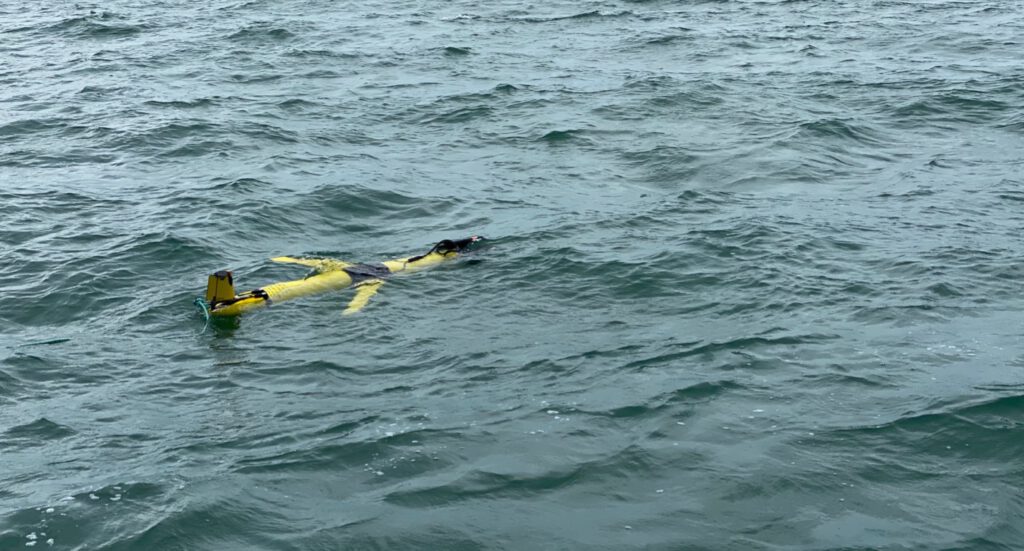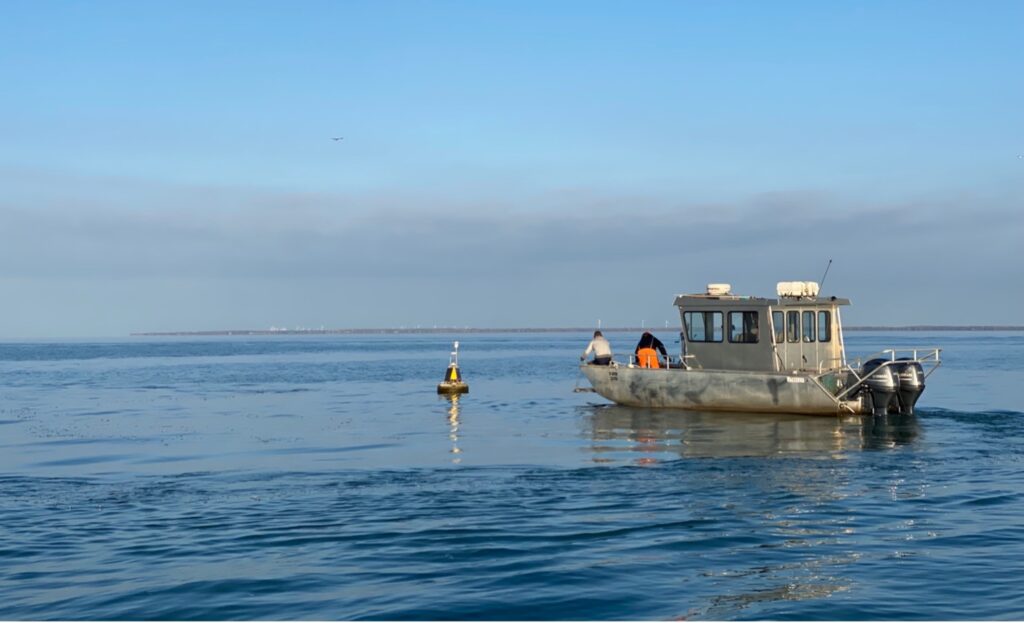This project will help scientists better understand and predict the development of harmful algal blooms (HABs) using real-time data. The project team will deploy real-time continuous monitoring instruments in Lake Erie — the first time this equipment has been used this way in freshwater — to better understand how nutrients, temperature, and other factors lead to the development of HABs and hypoxia, oxygen-depleted water.
To collect the data needed, the team will use real-time buoys; Slocum gliders – a bright yellow, torpedo-shaped autonomous underwater vehicle that collects data where buoys are impractical; and eDNA detectors, which collect DNA to determine whether harmful or rare species of algae are present in the water. Data will be collected and uploaded continuously via cellular service to laboratory computers.
The information also will help identify other triggers that lead to HABs that may be related to climate change, such as proliferation of algal species that are more resistant to higher temperatures. Engineers will then use this information to develop early warning models that will inform water security and help develop more efficient facilities. Once the process is refined for Lake Erie, it can be set up and used in other Great Lakes and in freshwater systems across the world. The decision support systems developed will be shared with water quality suppliers and other stakeholders.

The project includes three private partners, UWSS, InnovaSea, and Pro-Oceanus, and researchers from Trent University, Queen’s University, and the University of Toronto. Environment and Climate Change Canada will participate to support the development of management and policy for freshwater ecosystems.
For more information, please contact Dr. Aaron Fisk
Further reading: https://windsorstar.com/news/local-news/uwindsor-researchers-using-1m-grant-to-help-predict-harmful-algal-blooms
